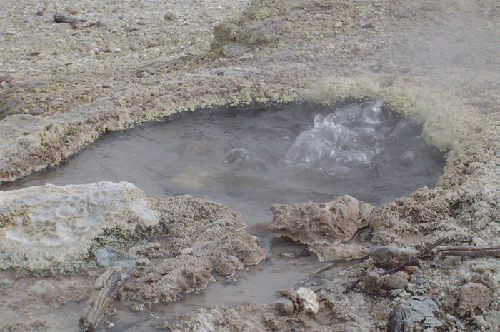Geothermal projects full steam ahead
Geothermal activity in Rotorua creates a myriad of mineral-laden hot springs and mud pools. Photo: Louise Thomas, IRANZ.
Developing a geothermal spa and bathing facility in Rotorua and aiding Top Energy at Ngawha Springs to make better use of their brine discharge are two exciting geothermal projects that Heavy Engineering Research Association (HERA) engineers and various HERA member organisations are currently involved in.
Construction on the spa project is expected to begin later this year and the HERA team have been busy assessing the geothermal heat resources and preparing models of heating network arrangements and heat resource application potentials.
HERA members are also investigating the potential of integrating an Organic Rankine Cycle pilot power plant onsite to provide power to the spas facilities. The plant is leveraging low temperature geothermal sources harnessed from the site.
Industry Development Manager Dr Boaz Habib says developing the plant will hopefully prove the technology, and
Meanwhile, at Top Energy Limited HERA’s intern researcher Jenny Knittel visited the plant at Ngawha Springs as part of programme exploring waste heat opportunities throughout
“It was fantastic to talk with plant operators in the field, and catch a glimpse of their passion for the job and knowledge they possess for their work environment,” says Jenny. “We explored three of their sites which demonstrated various megawatt capacities ranging from 5MW up to 15MW - it was truly inspiring to see it all in action.”
Top Energy’s plant sits on a sizable geothermal resource thought to be between 20 to 40km2, with three production wells and recently gained consent to expand by another 50MW in the coming years. Connecting to the National Grid via their substation near Kaikohe, their operation enables them to consistently produce around 70% of electricity for their network region as
Dr Habib says part of the research is focused on identifying potential uses for Top Energy’s brine at discharge point. “So far, we’ve found potential for them to gain power from their waste heat, but it will be dependent on discharge temperature regulation.”
“This tour was a great opportunity for us to build a positive relationship with one of the key geothermal energy providers in
For more information about HERA’s geothermal projects, please email Dr Boaz Habib, or ph. +64 9 262 4753.
Date posted: 12 March 2017

